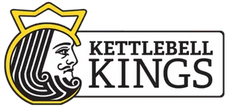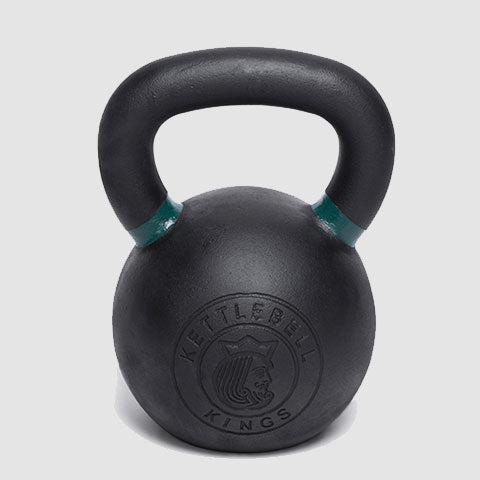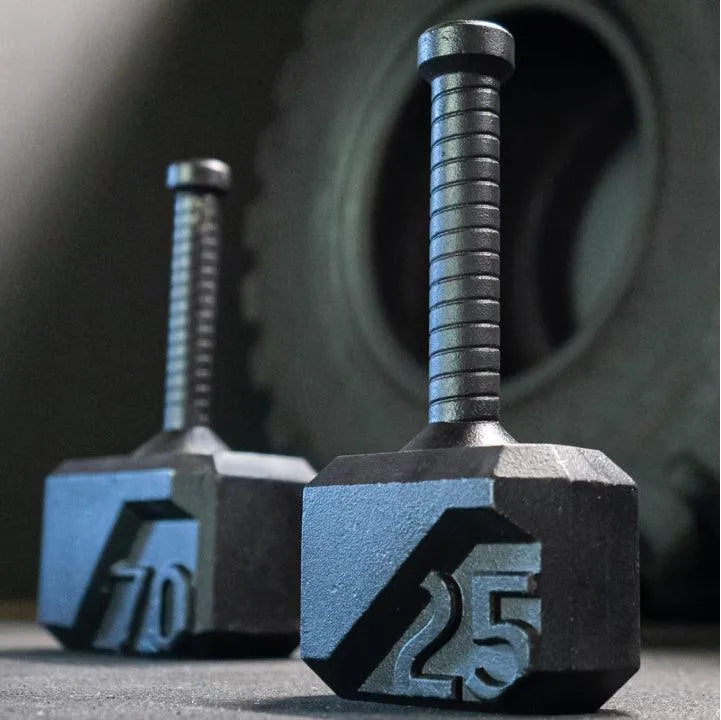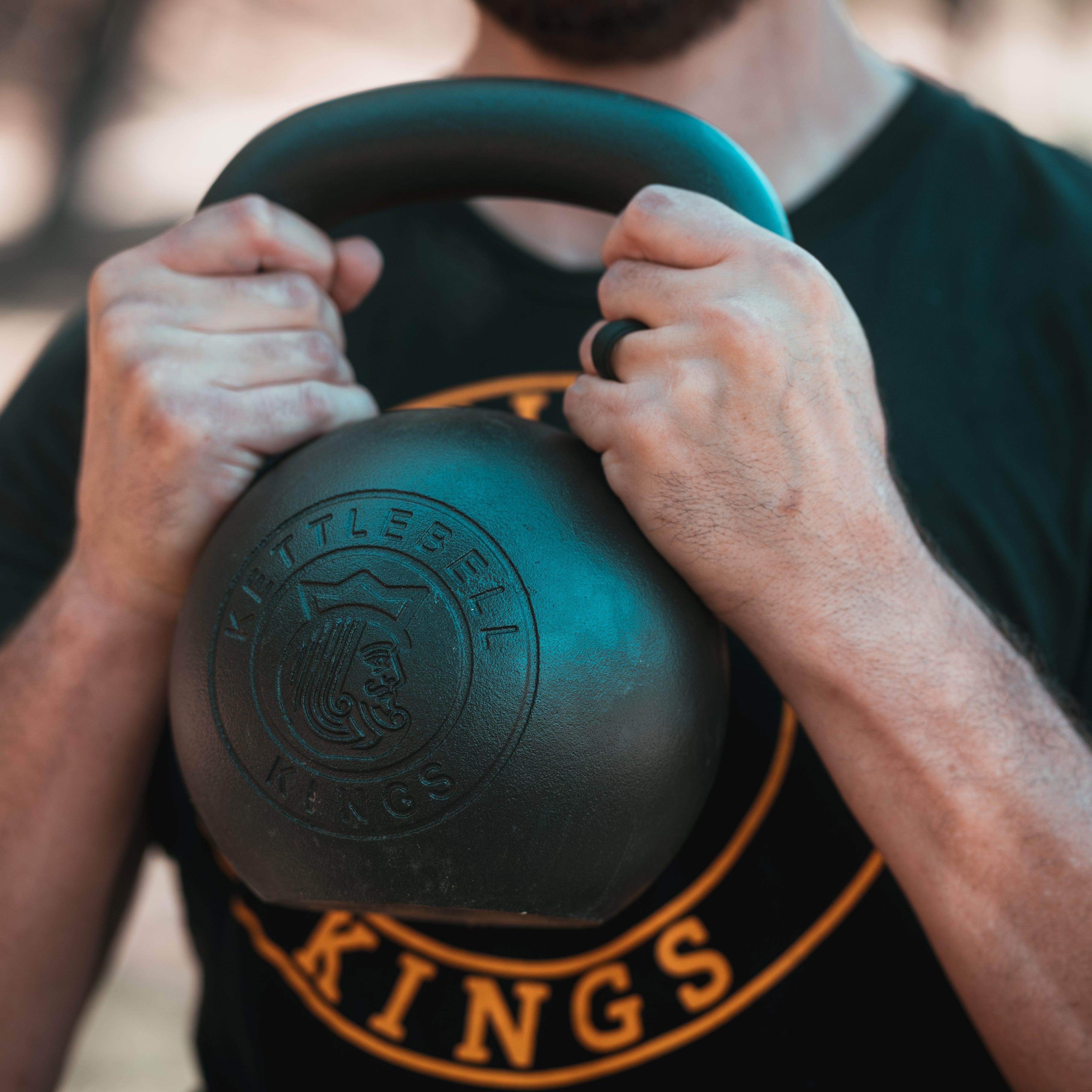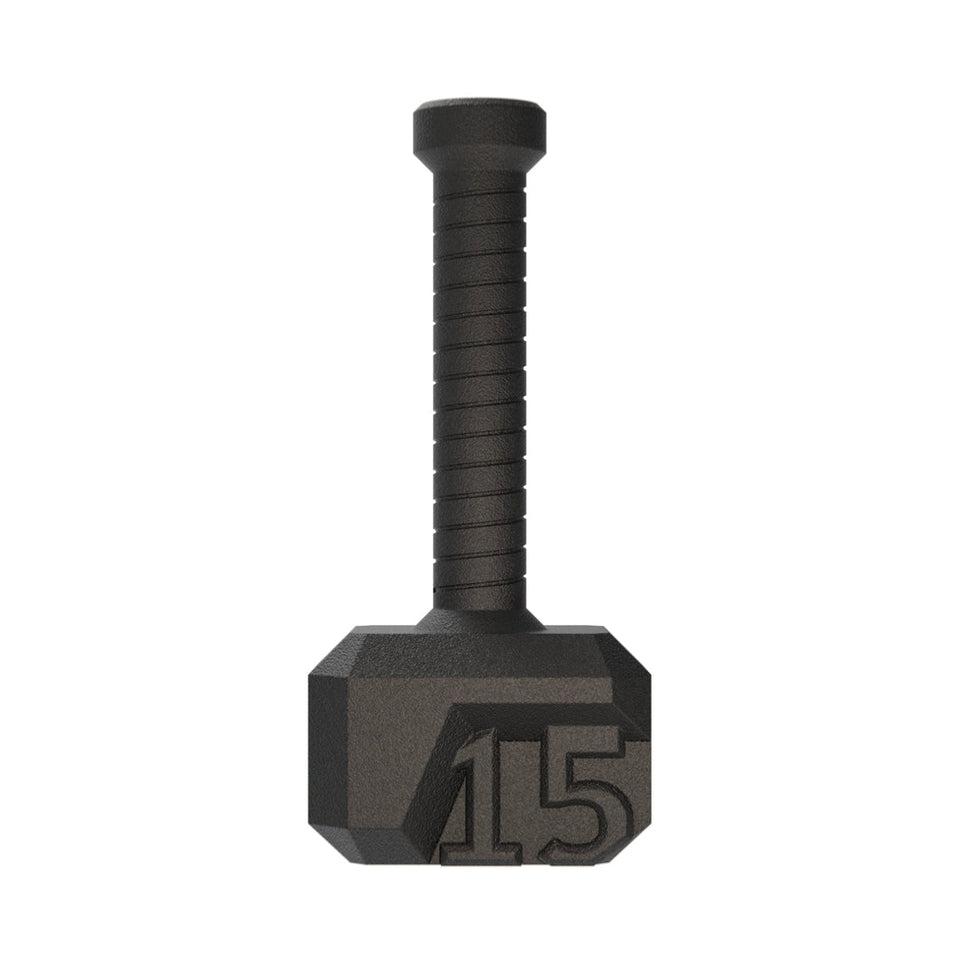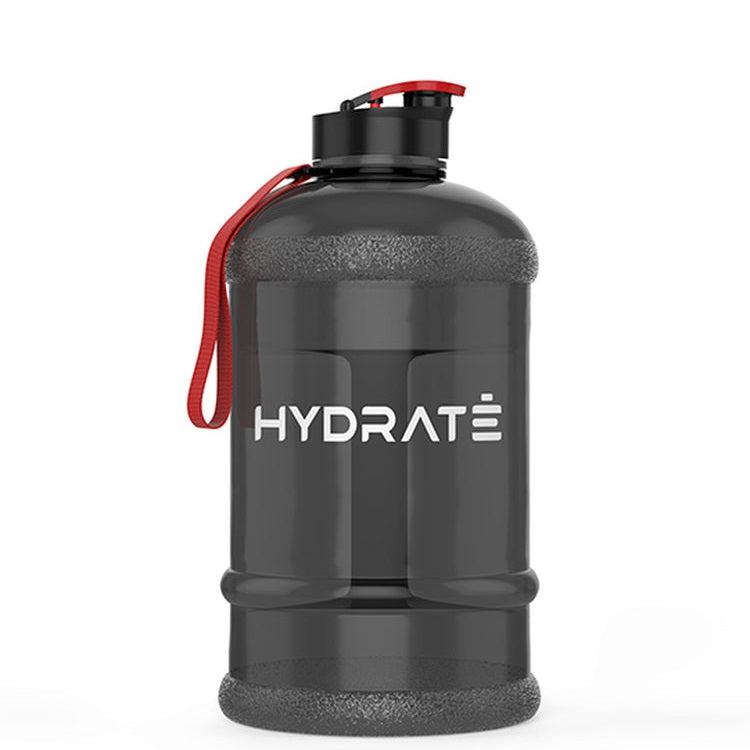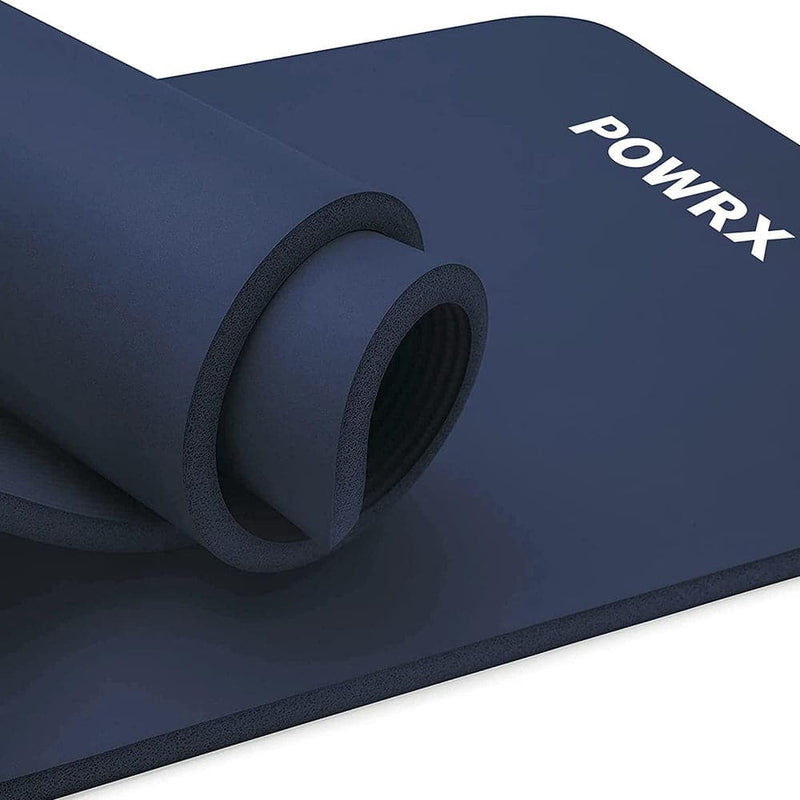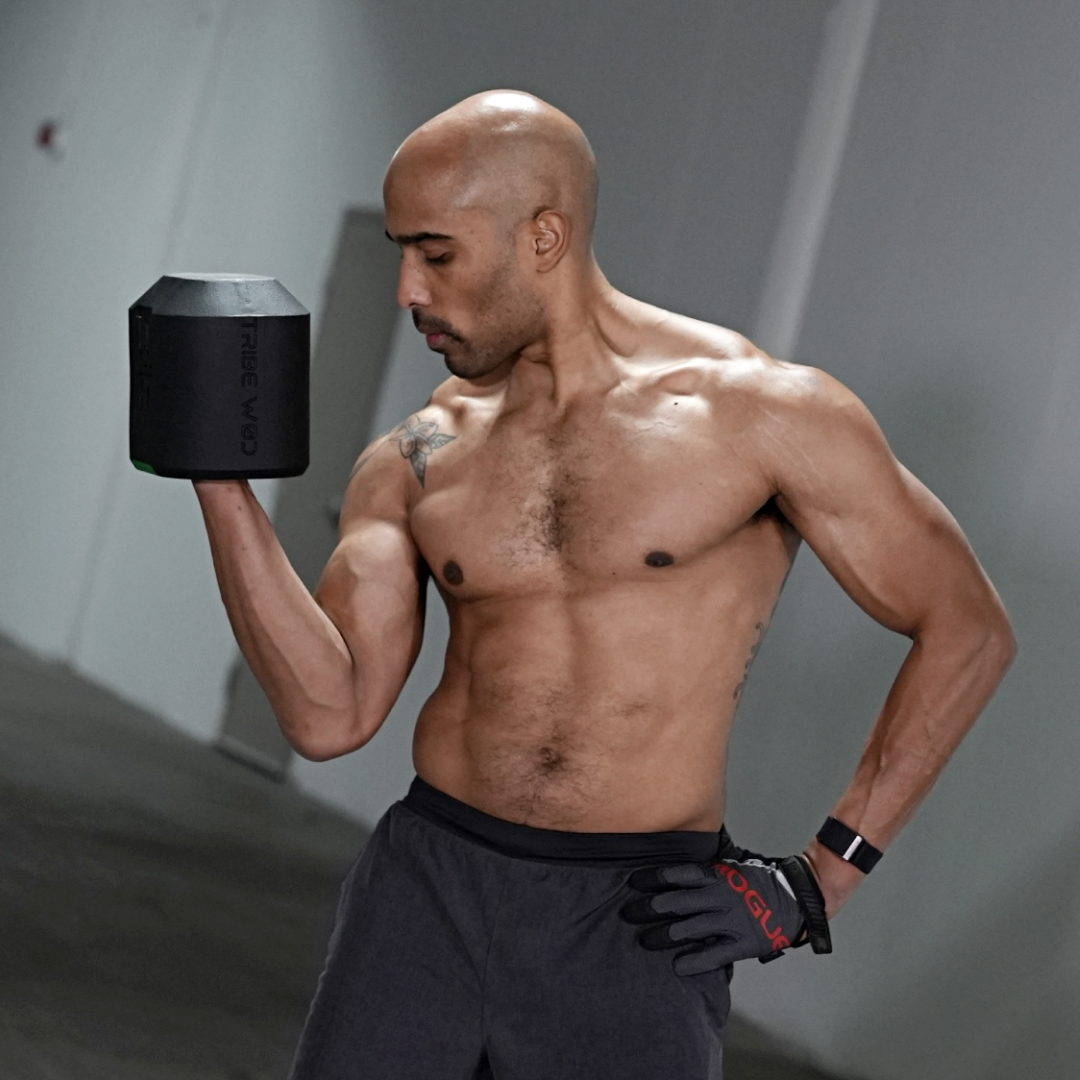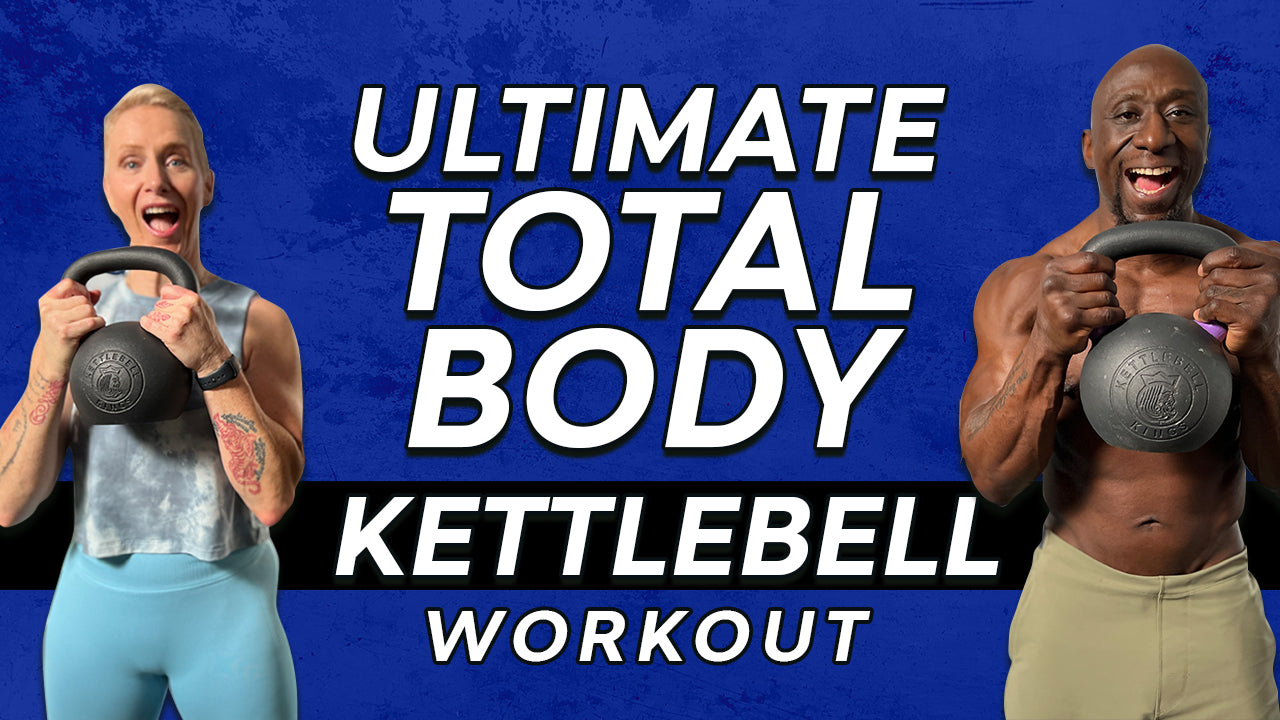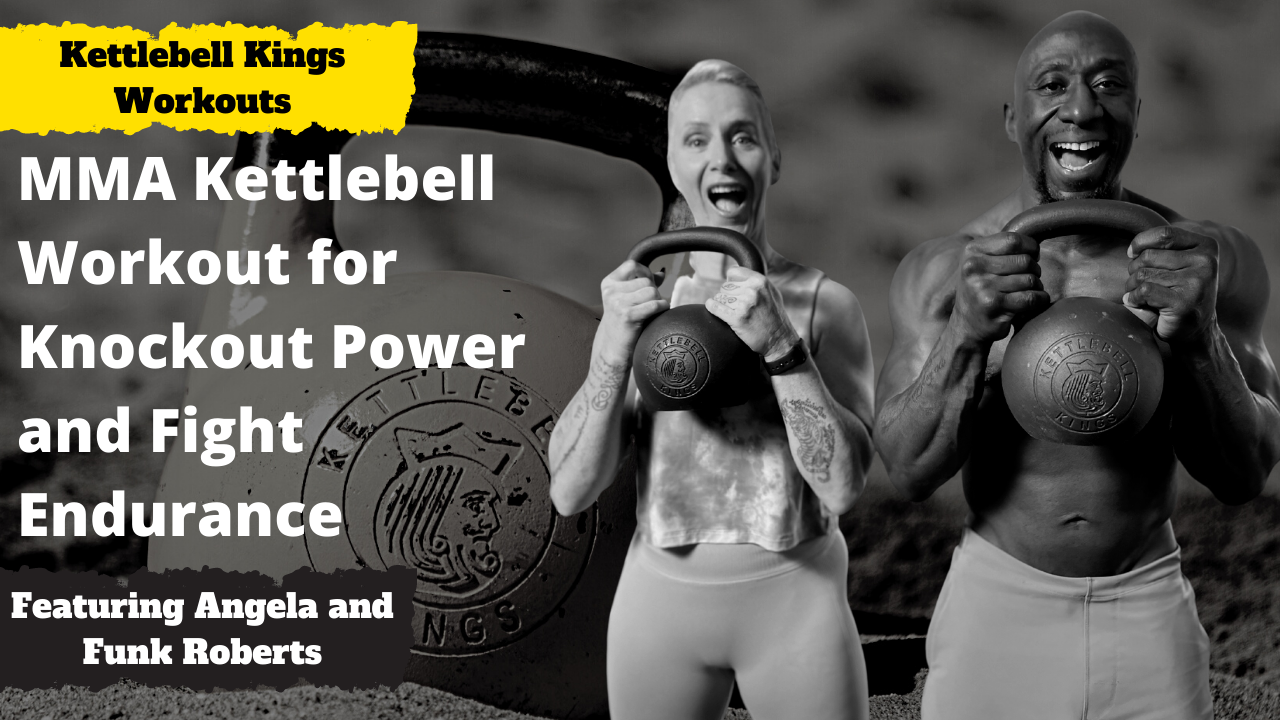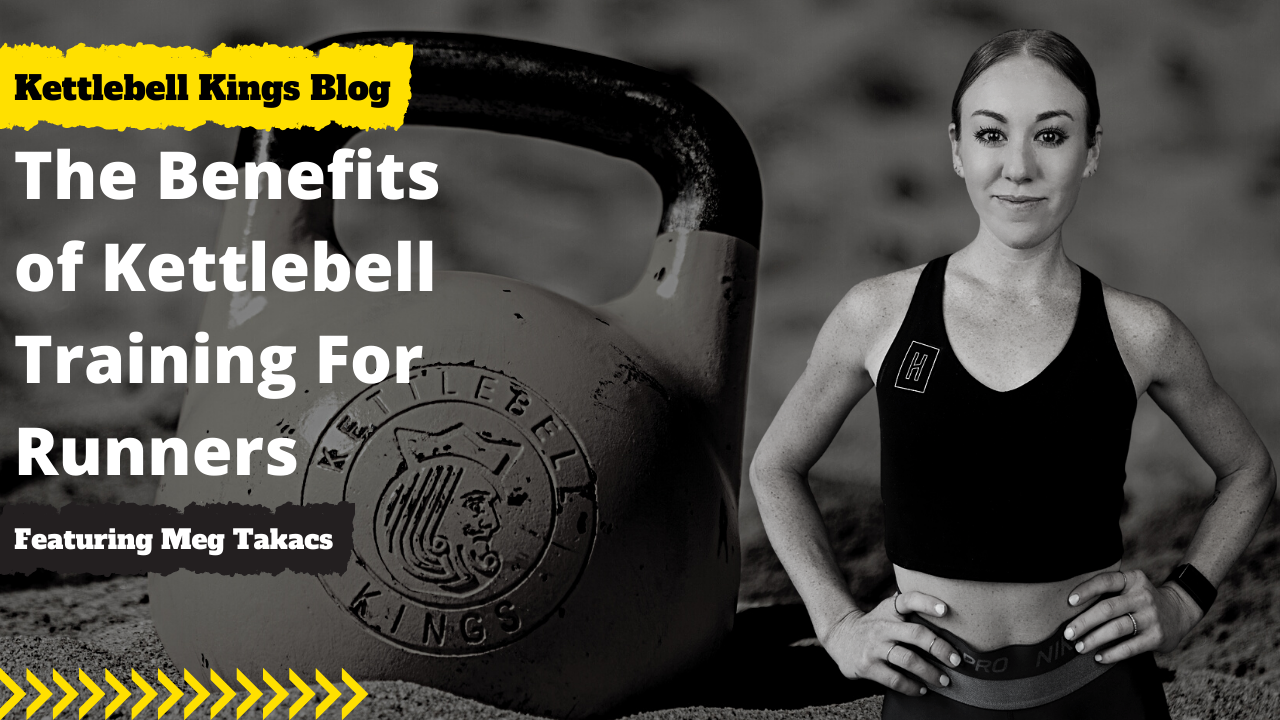Introduction
If you thought hitting the weight room at the gym was intimidating, what about picking up a kettlebell? Unlike machines and dumbbells, kettlebells aren’t the most intuitive pieces of equipment to use and can intimidate even the most experienced of lifters. But rather than shying away from these awesome pieces of iron, pick one up and own it.
While cardio may have been your go-to for burning fat and improving endurance, kettlebell training for women is quite possibly one of the most effective things a woman can do fitness-wise. They will challenge your body like never before to build strength, stamina, endurance, and flexibility like no other style of training can. Not to mention get you lean and shredded like an absolute machine–without having to worry about getting bulky.
If you’re looking for a time-efficient workout that delivers amazing results, kettlebells are your gold–and I’m talking about the reasons why kettlebell training for women over 40 is where it’s at.
What are kettlebells?
Kettlebells may be new to you, but this cannon-ball like piece of equipment has actually been around for decades, dating back to ancient Russia, where physical strength was a big thing. The first recorded mention of the word girya, a traditional Russian weight made from cast iron, was in 1704 in a Russian dictionary. While conventionally used as a method of weighing goods at local markets, these cast-iron balls became the key to achieving optimal strength. And by the 1960s and 70s, kettlebells were the latest and greatest addition to the fitness world.
Since then, they’ve long been a neglected part of fitness history, making room for the rise of the more popular dumbbells and barbells, and even machines, but nonetheless have maintained their strength integrity with the fittest of the fit. Whether you’re looking to change up your training program for something more functional or want a more time-efficient and effective workout, kettlebells are no doubt a great addition to any training program, especially for women over 40.
So, with that said, I’m breaking down what you need to know about kettlebell training for women over 40. Don’t be shy of these beastly pieces of equipment. Get familiar with them, get comfortable, and get cracking–they’re one of the best things you can add to your routine.
The importance of functional strength and mobility
Women have always shied away from lifting weights in fear that it will make them bulky, but there’s nothing to be scared of when it comes to strength. While it may not have been the ‘ideal’ feat for females, strong is sexy. The problem though is that when most women think about building strength, they think of the heavy-lifting, bodybuilding style of strength, which usually results in maximum strength and major muscle growth–but it doesn’t have to be that way. Building functional strength and mobility is one of the best things you can do for your body at any age.
Unlike conventional strength training that isolates muscles and works them to exhaustion using heavy weights, functional strength training improves your ability to perform everyday tasks and functions, whether that’s bringing grocery bags in from the car, walking up the stairs, or chasing your kids (or grandkids) around. All forms of strength training are technically functional in nature, but what I’m talking about with kettlebell training for women is segregated on its own because it involves more dynamic, full-body movements than traditional strength training doesn’t. You’re working multiple muscles during a single exercise to encourage better endurance, core stability, balance, and coordination, on top of gaining strength.
Plus, you’re not limited to the conventional “weights” like dumbbells, barbells, and machines. You’ve got your pick of more functional tools like dumbbells, bands, sandbags, medicine balls, body weight, and of course kettlebells, or a combination of. In doing so, you’re challenging other parts of your body that traditional strength movements probably wouldn’t hit for all-around better strength and stability.
But strength also comes with mobility, both of which are important for everyone, regardless of age or gender, and especially as we start ageing. Although you’re not likely to hit menopause in your 40s (though you may be experiencing symptoms of peri-menopause), once you close in on your 50s, menopause and hormone imbalances become real. The sharp drop in estrogen leaves you susceptible to weakened bones, muscle loss, and fat accumulation, none of which you welcome with open arms. So if you’re not keen on falling trap to all the staple symptoms of menopause, gaining strength and mobility can be your secret weapon.
Roadblocks for women over 40
Hitting the 4-0 may seem like a major life milestone, but it’s important to remember that while women’s bodies do tend to undergo some big changes after 40, there’s nothing stopping you from living your healthiest, fittest, and happiest life. Know that you can keep the fountain of youth flowing with sound nutrition and a solid training program–regardless of age.
But in any sense, here are some of the major changes that happen to women in their forties.
1. Hormonal imbalances
Female hormones are a major love-hate relationship. They offer a lot of great things for women, but they also offer a lot of nasties that most women don’t want to deal with. And when we encroach on the 40s, we’re also closing in on the impending doom of menopause where hormones are at their most vulnerable, especially estrogen.
Female sex hormones are fundamental building blocks for normal growth and development, and also play a major physiological role in maintaining the health and function of several organs, including the brain, heart, and bone. But of the female hormones, estrogen plays one of the most pivotal roles. We typically think of estrogen for regulating the female menstrual cycle, but it’s so much more. It also influences the reproductive tract, urinary tract, heart and blood vessels, bones, breasts, skin, hair, mucous membranes, pelvic muscles, and the brain.
During a woman’s peak reproductive years, circulating estrogen levels rise and fall in a fairly predictable pattern throughout the life of the menstrual cycle as a result of two hormones: follicle-stimulating hormone (FSH) and luteinizing hormone (LH). However, once you reach your 40s, estrogen levels start to go a little whack. Periods become irregular, hot flashes start hitting you when you least expect them, and all the signs of perimenopause are coming at your like no tomorrow. It’s the “transition” period between the reproductive years and menopause, and it’s characterized by reduced ovarian function and decreasing estrogen levels, which can also lead to changes in body fat distribution and weight regulation. All of this highlights the importance of a sound nutrition and exercise protocol to mitigate some of the nasty effects of menopause.
2. Energy levels
With wonky hormones also comes the inevitable wonky energy levels. You’re awake and alert one minute, and then next you’re ready for bed at 7 pm. There’s really no guessing what will come next. Fatigue is a common symptom experienced by a lot of women in that menopausal transition period due to fluctuating hormones that can interfere with energy levels and sleep quality. In fact, a study published in the Journal of Psychosomatic Obstetrics & Gynecology found that fatigue was the number one symptom reported by menopausal women. But there’s good news. While you may not be able to tame your hormones at the snap of a finger, exercise could be your gold at the end of the rainbow. Not only can exercise improve symptoms of menopause (hot flashes, weight gain, mood swings) but moderate to high-intensity exercise has been shown to boost energy levels.
3. Building strength and muscle without getting bulky
One of the major things for women of all ages is building muscle without getting bulky. There’s this long-standing notion that lifting weight causes women to bulk up, but the fact of the matter is that it’s just not true and there’s little evidence to support it. Testosterone is the major anabolic hormone responsible for building mass, and women don’t have high enough levels of testosterone to become ‘bulky’ (unless they’re injecting). So, all lifting weights do–especially kettlebells–is build functional, full-body strength and support better bone health, greater muscle mass, more balanced hormones, and a healthier metabolism. I think that would be a huge YES for most women.
4. Bone health
Bone health is a huge thing for women reaching perimenopause and menopause. Because estrogen plays a large part in maintaining bone health and strength, decreasing levels that come along with menopause can leave women more susceptible to bone fractures and breaks.
Estrogen is essential for the growth and maturation of bone, along with the regulation of bone turnover. However, menopause and the accompanying loss of ovarian estrogens results in a major decrease in bone mineral density, weakened bones, and an increased risk of fractures and osteoporosis. That is precisely why for women entering both perimenopause and menopause, a diet rich in bone-building nutrients like calcium, vitamin D, and magnesium, alongside a solid resistance training program, is key for supporting bone health and strength.
10 Benefits of kettlebell training for women 40+
If you’re tired of hitting up the treadmill in hopes of losing weight and keeping it off, I have some better and substantially more effective for you–kettlebells. They may seem like a simple piece of iron, but when it comes to the health benefits, they’re more like a miracle worker.
Here’s what I mean.
1. Weight and fat loss
Losing weight and keeping it off can be a challenge at the best of times, but becomes substantially more difficult as we get older. Metabolism starts to slow, hormones become wonky, and our bodies just don’t work the same as they did when we were 20. The cupcake you ate last night went straight to your thighs; the chocolate you’ve been munching on has been stored in your belly. It seems like weight gain is inevitable–but it’s not.
Kettlebells are some of the most versatile and effective pieces of strength equipment for torching fat and supporting weight loss. Within just a few minutes of swinging around the iron ball, you’ll be sweating like no tomorrow while simultaneously building muscle, which works to burn even more calories. The thing with high-intensity resistance training is what even when you’ve stopped working, your body is still burning energy to bring everything back to balance. It’s called exercise post-oxygen consumption (EPOC) and it’s the energy required to bring your body back to homeostasis after exercise. While you can achieve EPOC using virtually any pieces of strength equipment, the versatility and functionality of kettlebells work your body like no other piece of equipment can. In fact, a study published by ACE on the energy cost and exercise intensity of kettlebell workouts found that a mere 20-minute kettlebell workout burned, on average, 272 calories, which didn’t account for any additional calorie burn due to the substantial anaerobic effort (EPOC). To break that down, that’s about 20.2 calories burned per minute, which is equivalent to running at a 6-minute mile pace.
Plus, if you’re not a big fan of workouts, you’re getting major calorie burn in minimal time. That’s exactly why I say kettlebell training for women over 40 is one of the best weight-loss options.
2. Gain muscle tone and strength (without getting bulky)
Let’s get this straight ladies–lifting weights does not make you bulky. While you may see female bodybuilders, the type of workouts they’re doing are nowhere near what you are doing. If you want to build that lean, toned, and defined body, hit up the bells. You want to build symmetry in your body, meaning you want to build lower body and upper body strength equally on both sides.
Conventional strength workouts that isolate muscles using machines and barbells can mask muscle imbalances and don’t work your body evenly, which not only increases the risk of injury but can lead to major muscle and strength imbalances. However, kettlebells offer ballistic, total-body workouts that build and tone your body from top to bottom. Want stronger, more defined shoulders? No problem! Bigger, firmer glutes? You betcha. More powerful legs? Yep, that too. It’s a one-and-done workout that will hit every muscle to build, strengthen, and tone your entire body.
Women may be at a disadvantage for building muscle because they inherently have lower testosterone levels, but that can easily be overcome by training in a way that maximizes hormone levels, burns fat, and builds muscles to create lean, athletic and ultra-feminine physique.
3. Balance hormones
You’re probably well aware of the nasty effect that hormone imbalances can have on your body. Whether it’s menstrual cycles or lack thereof (menopause), there’s nothing pretty (or welcomed) about night sweats, hot flashes, cramps, and bloating.
Hormones tend to peak and drop at the most inconvenient times and can affect virtually every aspect of your life, from your mood and libido to fertility, sex drive, and even your body temperature. But as it turns out, exercise can have major impacts on your hormones–especially HIIT. Where hormones are concerned, there are a few you want to know about:
1. Estrogen: As I talked about before, estrogen is the hormone produced in the ovaries that’s heavily involved in the menstrual cycle, pregnancy, bone strength, and mood. It’s also the hormone most heavily impacted by menopause. But having the right amount of estrogen is key to boosting fat loss because it enhances insulin sensitivity, decreases fat storage, and regulates appetite. On top of that, it also triggers the production of growth hormone (GH), which upregulates fat burning. But as you creep closer to menopause, estrogen becomes difficult to balance. However, short-duration, high-intensity circuit training is one of the best ways to decrease estrogen because it can trigger a huge increase in GH, thereby helping women build muscle, burn fat, and regulate blood glucose levels.
2. Growth hormone: Secreted by the pituitary gland, growth hormone is well-known for its role in muscle building, but it also facilitates lipolysis (fat breakdown) and contributes to increased bone strength, on top of facilitating muscle protein synthesis for a faster and more efficient recovery. Because women produce lower levels of testosterone, they’re more dependent on GH for muscle building and fat metabolism. There’s a fair bit of evidence showing that high-intensity workouts can enhance GH secretion. So, while your glutes and shoulders may be on fire mid-kettlebell workout, that burn is actually amplifying your GH response, which means kettlebell training for women is a major plus.
3. Testosterone: Contrary to what most women believe, testosterone actually plays an important role in the development and maintenance of muscle size and strength, as well as energy and bone density, all of which are critical for women over 40 as all of those tend to decrease with age. On top of that, testosterone can actually reduce body fat, especially in the belly. Research finds that high-intensity exercise, lifting heavier weights or upping the intensity of your workouts can help to maintain sufficient levels of testosterone.
4. Cortisol: Cortisol is kind of like the Jekyll and Hyde of hormones–it’s great for some things and it really sucks for others. During any type of stressful situation, cortisol rises to increase alertness and essentially help you “fight” through the stress. But the downside of high cortisol is while you may be able to get through whatever the stress is, high cortisol heavily impairs your body’s ability to burn fat and build muscle. By nature, cortisol is a catabolic hormone that triggers fat storage but also increases blood sugar to boost energy. However, on the good side of things, cortisol is essential for optimal health and under the right circumstances, it can actually help you burn fat. That is, the rise in GH and the catecholamines (epinephrine, norepinephrine, dopamine) that happens during exercise can accentuate cortisol’s ability to burn fat. But to do so, you have to elevate the intensity of your workouts, which allows the catecholamines to work synergistically with cortisol and other fat-burning hormones to mobilize fat stores.
4. Support bone health
Declining levels of estrogen can mean major trouble for your bones. As I mentioned above, estrogen is a key regulator of bone metabolism in both men and women. During menopause, loss of ovarian estrogens (or reduced levels during perimenopause) contributes to declines in bone mineral density, which has major implications for fracture risk and osteoporosis.
But kettlebells give you a light at the end of the tunnel. Resistance training, whether in the form of dumbbells, barbells, or kettlebells can improve bone mineral density and overall bone health. Studies show that the mechanical load induced by resistance exercise increases muscle mass, elicits mechanical stress on the skeleton, and enhances osteoblast (bone-building cells) activity. But it’s not all exercise. Walking, for example, which is a low-impact activity, doesn’t elicit loads of a sufficient magnitude, rate, or distribution to stimulate bone cells and the subsequent adaptive skeletal response. So, if you want to improve bone density, you need to increase the intensity and provide a sufficient mechanical load.
Look at this. A 2021 study looked at the effects of kettlebell training on bone mineral density in older adults with osteoporosis and found that “16-weeks of high-volume moderate to high-intensity hardstyle kettlebell training performed 5 days a week improved bone mineral density, with the magnitude of change sufficient to advance osteoporosis to osteopenia”.
5. Reduce the risk of injury
One of the big risks that come with ageing is injury. Even though you may take precautions to protect yourself, injury can happen in the blink of an eye. While lifting weights can help to strengthen bones, muscles, joints, tendons, and ligaments, isolated movements often don’t target the smaller muscles that maintain stability, which means that one wrong move could send you to the floor.
That’s where kettlebell training for women shines. Because a lot of kettlebell movements are performed unilaterally and under unstable conditions, you’re forcing all the tiny stabilizer muscles to engage and strengthen, which helps to strengthen and stabilize every area of the body leading to less risk of injury. And because kettlebells work the posterior chain during most movements, you’re improving back strength, which helps to prevent injuries like low back pain.
6. Strengthen your core
Hormones can wreak havoc on the belly (and if you’ve had kids, you’ve probably noticed a change in core strength), but kettlebells are an awesome way to whip that core back into shape, burn abdominal fat, and strengthen and stabilize it. While women don’t always chase a chiselled core with rock-solid abs, a strong core is essential for more than just aesthetics. It’s the foundation for posture, spinal stability, trunk support, forceful expiration, and more. Contrary to what a lot of trainers believe, crunches aren’t the way to build core strength–kettlebells are. They’re compound, unstable movements that challenge all the muscles in your core by changing your centre of gravity, which forces you to engage and brace your core to build functional strength and stability in the spine. Incorporating unilateral rotational movements like Russian twists, and single-arm KB swings are also great for firing up the core muscles.
7. Sculpt glorious glutes
If you’re looking for a firmer and rounder peach, kettlebells are the way to get it. They’re one of the most effective tools for improving the muscles in the posterior chain–the upper and lower back, hamstrings, and glutes, all of which contribute to functional movements and explosive power. Because a lot of kettlebell exercises utilize the hip hinge movement, you’re forcing the posterior chain to engage, meaning that every time the hinge movement is performed, you’re working and strengthening those muscles.
So, you can say goodbye to your banded butt kicks and replace them with things like goblet squats, staggered stance Romanian deadlifts, KB glute bridges, and suitcase deadlifts. They’re compound, hip-hinge based movements that fire up every muscle in your glutes to build size and strength.
8. Better posture
Poor posture may not be the nicest look but it actually has a lot of negative health consequences, including spinal curvature, back pain, neck and shoulder pain, poor sleep, and more. As I mentioned earlier, kettlebells are one of the best pieces of equipment for improving strength in the posterior chain, which make up the major muscles involved in explosive speed, jumping, running, and proper posture. Using kettlebells and stability balls can help to strengthen and protect the back muscles to maintain good posture and reduce back pain. In doing so, there’s less risk of injury and pain, and in turn, your posture improves.
9. Improve balance and coordination
Using machines can be a great way to build strength, but the major downfall to them is that they require force input in a predetermined direction or movement path, whereby a kettlebell’s weight is not evenly distributed and the weight is free to move in any direction. As a result, kettlebells engage more muscles to control the weight and maintain a stable position.
The centre of gravity for kettlebells is about 6-8” away from the grip on the handle, which makes them more difficult to control and therefore requires more coordination, focus, and balance. On top of that, because kettlebells are uneven weight distribution, stabilizer muscles are recruited to counterbalance the kettlebell's moving centre of gravity. This means that even though you’re working the intended muscle groups, you’re also recruiting and activating smaller muscle groups to help balance the body and control the kettlebell. Here’s what I mean. During a kettlebell push press, you’re not only engaging the shoulders and triceps–the primary muscles worked during pushing movement–but also engaging the back muscles for stability.
What’s more, with kettlebells you’re also improving proprioception–your body's ability to sense movement, action, and location. The various movements of kettlebells–swings, sideways, between the legs–all train the brain to be aware of where your body is relative to where the moving weight is, so you’re improving coordination with every movement.
10. Improve shoulder strength and stability
The uneven weight distribution with kettlebells challenges your shoulders in ways that dumbbells and barbells don’t, which ultimately results in better shoulder strength and stability.
Because we’re constantly extending our shoulders to reach forward and overhead, maintaining shoulder strength and stability are critical to preventing injury and maintaining mobility. And the kettlebell is one of the best pieces of equipment to optimize shoulder health. Most kettlebell movements will, in some capacity, improve or restore mobility, stability, and optimize rotator cuff strength, along with the strength of the entire shoulder complex.
The 4 most common kettlebell mistakes
Unlike machines, dumbbells, and barbells that, even if you're not totally sure how to use them, you can probably slide by, kettlebells aren’t the most intuitive and straightforward pieces of equipment. As a result, improper handling and technique become really common, which can lead to serious injury if exercises aren’t performed properly.
1. Arching the low-back: If you’re not keen on throwing out your back and landing flat on the floor, paying attention to your back is key. Too much arching of the low back means you’re not maintaining a neutral spine, which establishes correct alignment and is done by pulling in the navel and engaging the core muscles. Whatever the exercise you’re performing–swings, high pulls, cleans, snatches, squats–keeping a straight line from your hips to your head is key. Ideally, you should be able to lay a broomstick or pole along your entire spine.
2. Not doing a hip-hinge: Despite how simple of a move it is, you’d probably be surprised at the number of people who don’t hinge properly during a swing. If you want to target the glutes during any lower body kettlebell exercise, you need to make sure you’re getting the hip hinge right and not replacing that with a squat. If you’re squatting too much, you’ll notice just as much knee flexion and extension as there is hip flexion and extension. Rather, you want your low leg to be perpendicular to the floor with no motion in the ankle and foot.
3. Your stance is too wide: All stances are not equal for every kettlebell movement. Overly extended stances during swings can leave several areas—your hips, knees, and lower back—vulnerable to injury, so you want to avoid that by instead taking an athletic stance. Keep the feet hip-width apart, bend your knees slightly, and hinge back at your hips.
4. You’re using your upper body to muscle the weight: With ballistic kettlebell movements, you want to be using your entire body to move the bell. Relying on your upper-body muscles to move the weight during ballistic movement can actually interfere with exercise flow and increase stress and strain on areas like the neck, shoulders, and lower back, which can ultimately lead to injury. Focus on relaxing the upper body and using your hips to move the weight.
The killer kettlebell workout you need to be doing
Ultimate Total Body Kettlebell Workout – Ladder MetCON Circuits (VIDEO)
This workout is broken up into 3 mini circuits that target your entire body, using METCON training protocol.
Circuit 1 - Ascending Ladder Protocol 1-5 reps.
Complete 1 rep of each exercise. Rest. Then complete two reps. Etc up to 5 reps.
1. Single KB swing to squat swing
2. Single KB clean from dead stop to goblet squat
3. Double kettlebell side step swing clean to strict press.
4. Staggered alternating Deadlift.
Circuit 2 - Double Kettlebell Complex Ascending Ladder Protocol 1-6 Reps.
Gorilla row each side - Hop back to hike position - clean to double racked position - Reverse Lunge each side.
March each side twice.
Return to start position.
That’s one rep.
Repeat for 2 reps. Etc. Up to 6.
Circuit 3 - Double Kettlebell Descending Ladder
Chest Press Dead Bug Superset - Descending ladder protocol. 7-1
Chest press in dead bug position.
7 chest press then 7 double leg dead bug extensions. Rest. Repeat for 6 reps. Etc. Down to 1.
References
Cauley JA. Estrogen and bone health in men and women. Steroids. 2015;99(Pt A):11-15. doi:10.1016/j.steroids.2014.12.010
Deemer SE, Castleberry TJ, Irvine C, et al. Pilot study: an acute bout of high intensity interval exercise increases 12.5 h GH secretion. Physiol Rep. 2018;6(2):e13563. doi:10.14814/phy2.13563
Herbert P, Hayes LD, Sculthorpe NF, Grace FM. HIIT produces increases in muscle power and free testosterone in male masters athletes. Endocr Connect. 2017;6(7):430-436. doi:10.1530/EC-17-0159
Hong AR, Kim SW. Effects of Resistance Exercise on Bone Health. Endocrinol Metab (Seoul). 2018;33(4):435-444. doi:10.3803/EnM.2018.33.4.435
Meigh NJ, Keogh JW, Hing W. Effect of kettlebell training on bone mineral density in two older adults with osteoporosis: a multiple-case study from the BELL trial. medRxiv. 2021.doi:10.1101/2021.08.15.21261771
Ruan X, Cui Y, Du J, Jin F, Mueck AO. Prevalence of climacteric symptoms comparing perimenopausal and postmenopausal Chinese women. J Psychosom Obstet Gynaecol. 2017;38(3):161-169. doi:10.1080/0167482X.2016.1244181
Stevenson JC. A woman's journey through the reproductive, transitional and postmenopausal periods of life: impact on cardiovascular and musculoskeletal risk and the role of estrogen replacement. Maturitas. 2011;70(2):197-205. doi:10.1016/j.maturitas.2011.05.017
Väänänen HK, Härkönen PL. Estrogen and bone metabolism. Maturitas. 1996;23 Suppl:S65-S69. doi:10.1016/0378-5122(96)01015-8
Ward-Ritacco CL, Adrian AL, O'Connor PJ, et al. Feelings of energy are associated with physical activity and sleep quality, but not adiposity, in middle-aged postmenopausal women. Menopause. 2015;22(3):304-311. doi:10.1097/GME.0000000000000315
Zhang J, Chen G, Lu W, et al. Effects of physical exercise on health-related quality of life and blood lipids in perimenopausal women: a randomized placebo-controlled trial. Menopause. 2014;21(12):1269-1276. doi:10.1097/GME.0000000000000264
